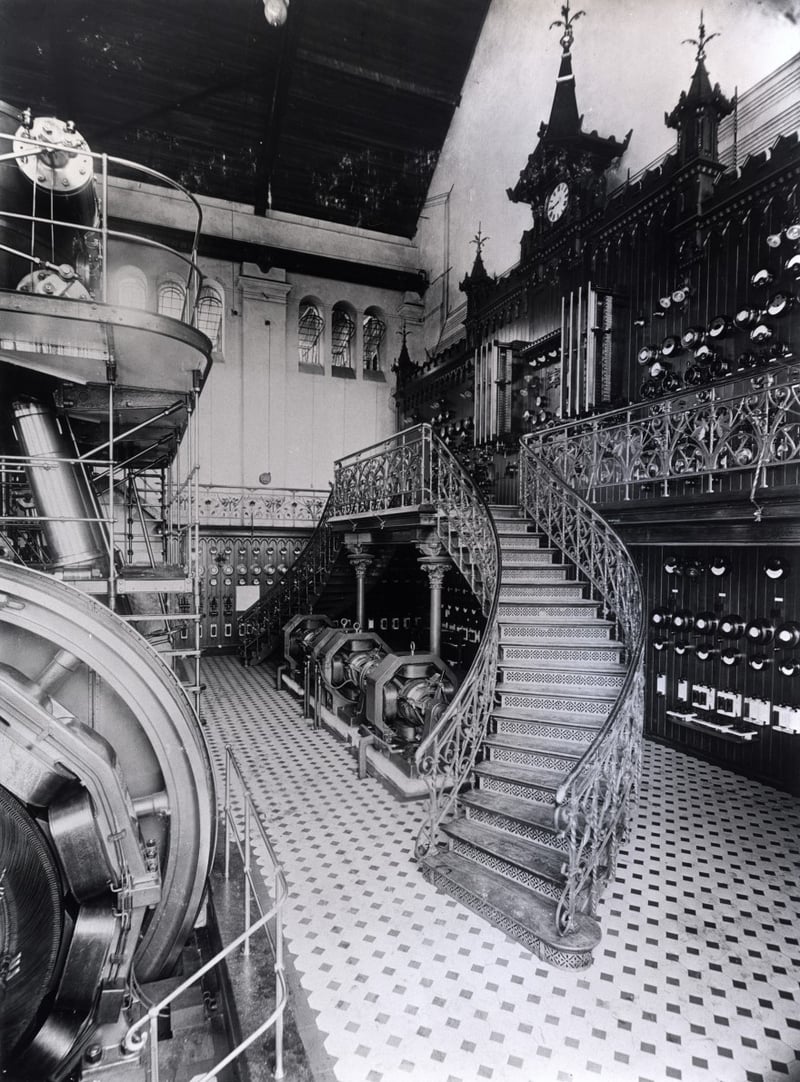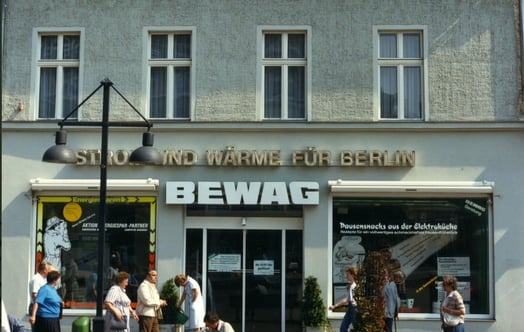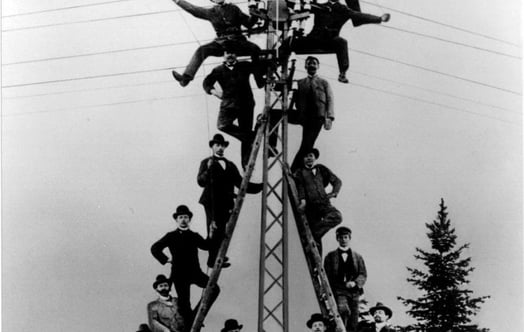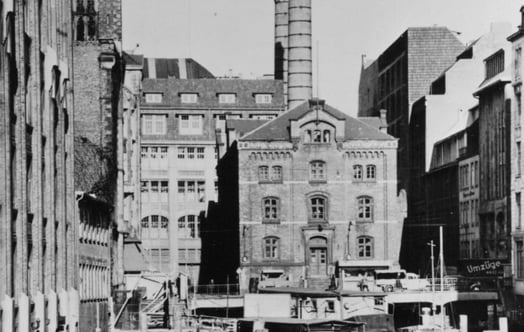Early District Heating/Ownership of HEW (Hamburg)
The history of district heating in Hamburg goes back almost 120 years. The first German heating plant was built here. And today, just as a century ago, the question is being discussed whether district heating and electricity grids should be run publicly or privately.
District heating - beginnings and development
As part of the modernisation of the Poststrasse power plant - formerly the city water mill power station (Stadtwassermühle) - HEW re-equipped two boilers solely for steam generation. This laid the foundations for a low-emitting supply of heat to Hamburg. By 1895, the plant was already supplying the new town hall with district heating.
District heating found increasing acceptance in Hamburg. The simultaneous generation of electricity and heat in the same plant proved to be extremely economical. In 1921, together with the Rudolf Otto Meyer company, HEW founded the Hamburg District Heating Plant Co. Ltd. (Fernheizwerk Hamburg GmbH). This marked the beginning of the widespread use of combined heat and power (CHP). HEW's district heating distribution grid grew to be Europe's biggest distribution grid at this time.

Switch room at the power station 'Karoline' in Hamburg | Year: 1896 | ID: VF000513
After the end of World War II, HEW drastically extended its distribution grid in the inner urban area. All new housing estates were connected. In 1963, the grid covered 100 kilometres, and by 1966, it had doubled to 200 kilometres. It continued to expand in the years that followed, and today covers 800 kilometres. Some 450,000 residences are supplied with district heating today.
In 1994, HEW entered a new business sector - thermal waste recovery. In the Borsigstrasse plant, HEW recovers waste efficiently and cleanly by converting it, for the most part, into district heating, leaving almost no harmful residues. Since 2012, the biomass-fired plant situated there has also supplied customers with low-emitting heat.
State-owned or private - a perennial topic
Discussion about whether HEW should be state-owned/city-owned or a private company is as old as the company itself. When the question of public power supply was discussed in the 1880s, the prevailing opinion was that energy supply belonged in state hands. But as early as 1892, the Hamburg senate determined that the operation and extension of the supply should be transferred to a private enterprise. The city did not want to take on the financial risk of future technological developments. And so, in 1894, HEW was founded as a private company.
Shortly before the outbreak of World War I, the city was dissatisfied with the amount of influence it had and sought greater participation. In 1914, it took over 50 per cent of HEW. The economic crisis of the 1920s meant that the city was no longer in a position to meet the necessary capital increases. As a result, its share fell to around 30 per cent.
In the years after World War II, HEW continued to be run as a semi-public company with private shareholders. But the city held a clear majority of the capital.
With the deregulation of the energy industry, discussion of state participation in energy companies flared up again. In 1997, the city began selling HEW shares. Vattenfall acquired 25.1 per cent of HEW shares at the end of the 1990s, and increased this share to 96.8 per cent by 2002. In 2012, after an interim holding of 100 per cent by Vattenfall, the city of Hamburg acquired 25.1 per cent of heat operation and the electricity grid.
The city of Hamburg bought the remaining 75 percent of the electricity grid during 2014. During 2015 the 1.548 MW coal-fired plant Moorburg became operational.



